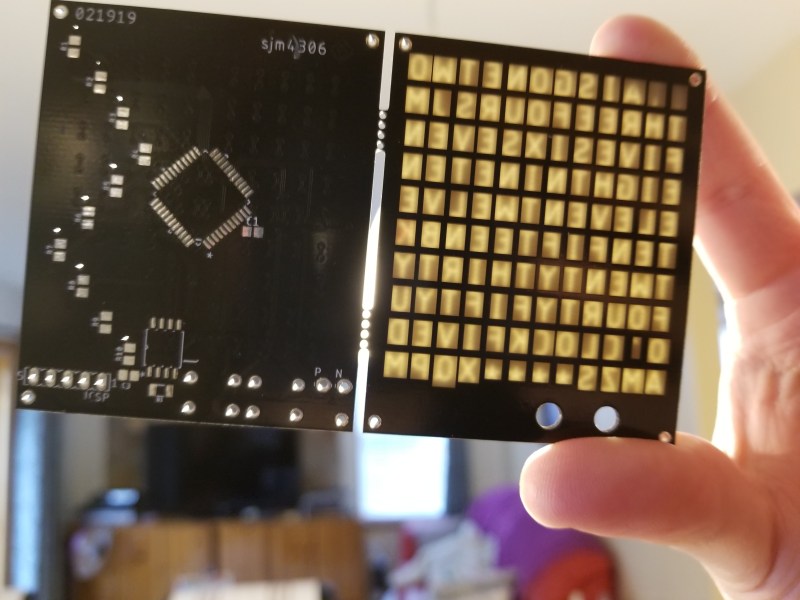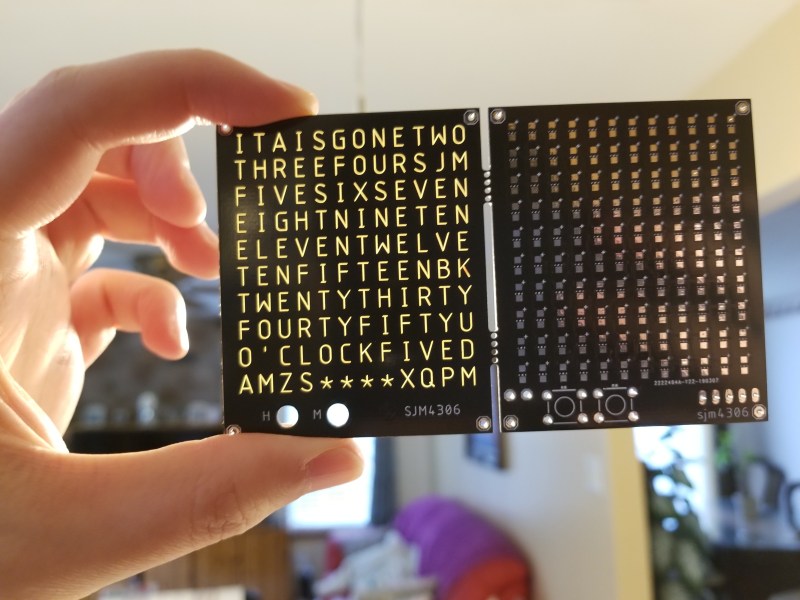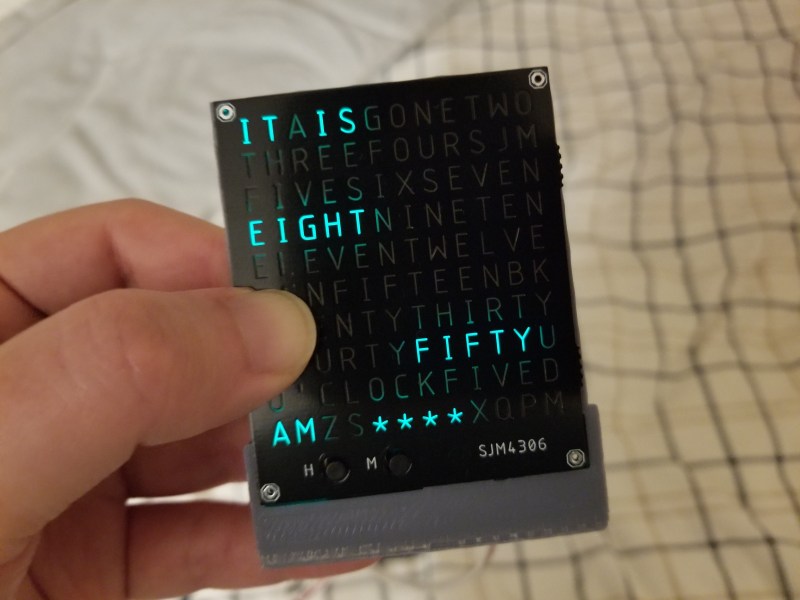If you’re like the average clock user, you’ve probably gotten annoyed at reading analog clocks before. Typically, the solution is just to use a digital timepiece, but [sjm4306] has opted to make a small word clock that you can carry with you wherever you go to remind you of the time in the English language.
Unlike a similar project made by [Gordan Williams], which uses an 8 x 8 LED matrix with an inkjet printed overlay, this small word clock uses a 3D-printed light box to achieve its letter matrix. In fact, they were inspired by all of the existing DIY word clock designs using anything from off-the-shelf LED arrays, transparency masks and WS2812s.
The design uses a home-brewed PCB design that runs off 5 V via USB. The design places the letters on the top stop and restricts layers to keep the solder mask and copper from obstructing the light. The bottom side uses the same design principle with a square shape that overlaps the letter. In order to block light between adjacent letters, the 3D-printed light box comes into play.

One design challenge for the letter matrix was fitting all possible minutes into the array. Rather than making a larger array of letters, [sjm4306] had the clock describe the time down to five-minute intervals then add asterisks for the full time. It’s a pretty understandable solution for keeping the design simple, and the letters all fit onto the design so well!

Using a pin map assigned to the I/O for the rows and columns of the array, the software toggles the states of the pins as a switch statement. For scanning the matrix, the software uses an interrupt that draws the current column of LEDs and updates the display image before incrementing to the next column. By skipping or not skipping cycles, this allows the display to look brighter or dimmer.
The time tracking is fairly simple, using a DS1302 serial real time clock chip – it even charges a super capacitor to keep time after power is removed!
To tackle the light scattered internally in the PCB’s FR4 material, a separator is used to contain the light. As a low-cost solution, while there is still some amount of light diffused, it’s definitely better than without the separator.
Almost all of the files used for building the small word clock are available on [sjm4306]’s project page, including the software and design files. It hopefully won’t be too long before we start seeing more of these low-cost word clock designs!




















Very nice build, looks like it’s been fun to work on. Unfortunately I could never have it on my desk in its current form because every time “fourty” came up I’d have to smash it.
Get a sharpie and fix it.
Fixed and uploaded corrected board and firmware to the project page. I have no idea how I missed such an obvious gaffe, I guess I was having a long day when I put this all together.
Is the kit available? Very cool design.
“If you’re like the average clock user, you’ve probably gotten annoyed at reading analog clocks before. ”
OMG, you are SUCH a millennial…
I read that sentence and thought “I don’t think I’ve ever been annoyed by an analog clock”
I know right, if anything analog clocks are the least annoying cause you don’t actually have to read them
The stars were a nice improvement over most or the word clocks I’ve ever seen!
There’s a problem with non-analog devices in that they use a different part of the brain and may take longer to resolve the information in the display (one of the reasons that digital “glass cockpits” in aircraft still mimic some of the older analog gauges, though they often contain numeric information as well, and numeric-display speedometers/tachometers in cars have never found much of a following). Glancing at a clock dial is much faster than digital-number clocks and reading the spelled time display takes longer still.
First time I had a digital watch at my exam back in high school, I wasn’t used to it.
My brains were probably thinking in metric time and wasn’t able to pace myself for the exam questions.
I would like to buy this.. are you selling?